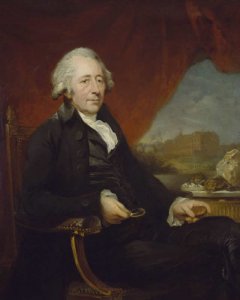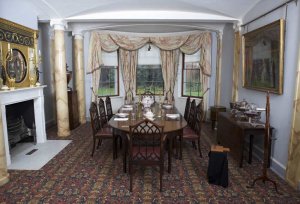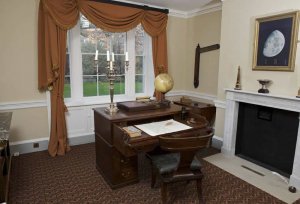The Lunar Society
Soho House Guide, reprinted with the kind permission of Soho House Museum

- Matthew Boulton, by C.F. Von Breda, oil on canvas, 1792.
- ©Birmingham Museums Trust
[click on the picture to enlarge it]
The eighteenth century, the period of the Enlightenment, saw a surge of interest in scientific subjects, and in many towns and cities philosophical societies were formed, and people flocked to attend lectures and demonstrations. Some of these societies had a large membership and met in halls and lecture theatres. However a society of a slightly different kind began to take shape in Birmingham. Though small in numbers, it was to become one of the century’s most influential philosophical societies.
It was around 1766 when the physician Dr. Erasmus Darwin invited Matthew Boulton and his friend Dr. William Small to join him at his Lichfield home for dinner and a little scientific conversation. These early meetings formed the basis of what became known as the Lunar Society. The Society took its name from the fact that members met around the night of the full moon, so that they might have better light by which to travel home. The members, who had wide-ranging interests, took it in turns to meet in one another’s home, often at Soho House, where Boulton was a hospitable host and kept a good table.

- Soho House, Dining Room
- ©Birmingham Museums Trust
[click on the picture to enlarge it]
It was a select band – there were never more than fourteen members, and they were never all together at once, yet they comprised some of the outstanding minds of the period, and made major contributions to scientific understanding.
Of the fourteen, ten were Fellows of the Royal Society, and four were also Fellows of the Linnaean Society. Between them they were in correspondence with many other leading thinkers across Europe.
Some of the most important work was Priestley’s. He discovered the power of plants to restore air by converting carbon dioxide breathed out by animals into oxygen (which he termed ‘dephlogisticated air’). Watt and Priestley demonstrated for the first time that water was a compound, and not (has had been thought up till then) an element. This was also a major scientific breakthrough. In the course of his work Priestley found a way to impregnate water with carbon dioxide, an idea taken up by one Jacob Schweppe who began supplying the philosophers of Soho with fizzy water by the cartload.

- Matthew Boulton’s Study
- ©Birmingham Museums Trust
[click on the picture to enlarge it]
The Lunar Society continued to meet, with the sons of Boulton, Watt and Galton adding to its membership, until the early years of the nineteenth century, but by 1813 most of the older members had died or left. In a poignant little ceremony on 8 August that year, Matthew Robinson Boulton, James Watt Junior, the son of Samuel Galton and Capt. James Keir drew lots for the Society’s library of scientific books. Young Galton won the draw, and sent a cart to Soho House to carry away the books, which have not been heard of since.

